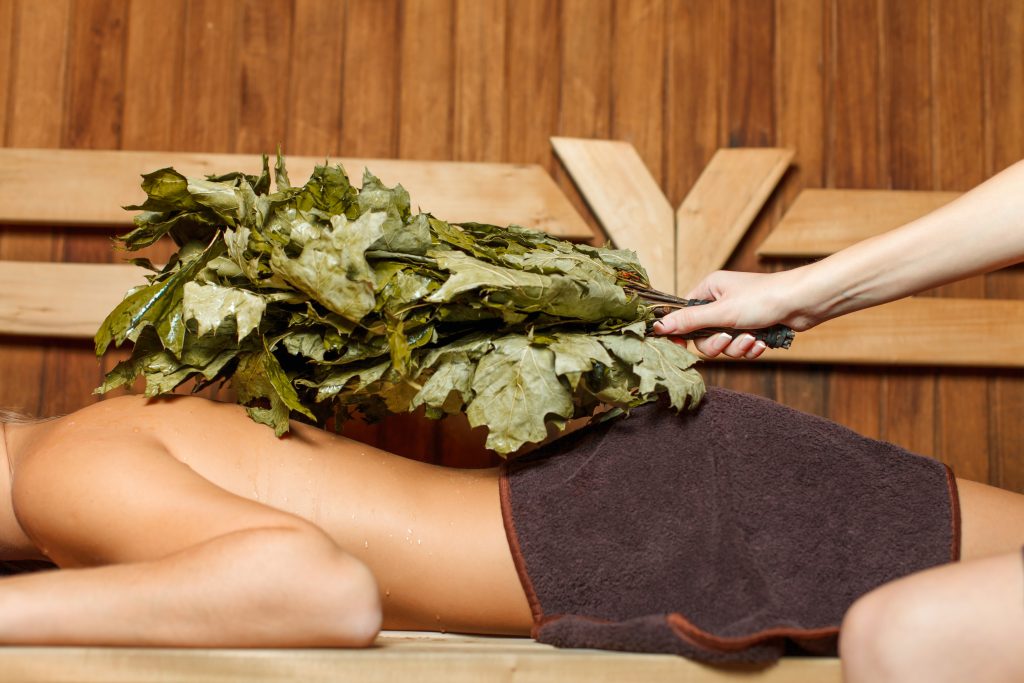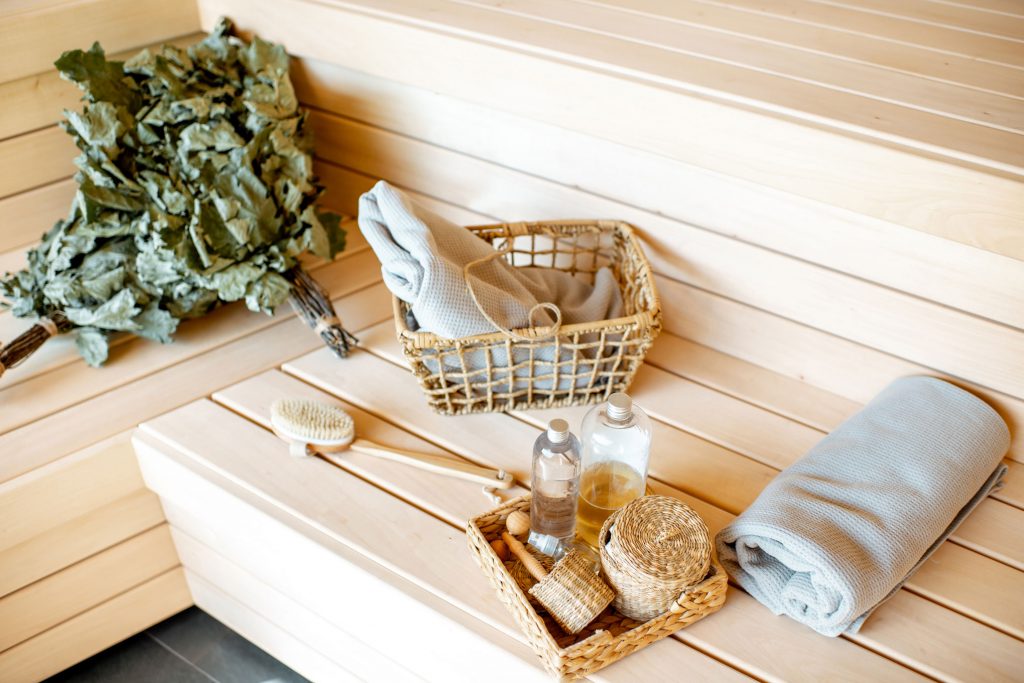
Shoppers are often focused on fun and relaxation when first considering a home sauna. What could be better than lounging in one after a long day, or inviting friends over for a warm spa afternoon during the winter months?
Fortunately, a dry sauna provides this and so much more:
- Easing of moisture-related skin symptoms.
- Lower temperatures.
- Clearer air and greater visibility.
- Wooden interior.
This post will explore the wide range of benefits you can experience when you add a dry sauna to your home.
What is a Dry Sauna?
A dry sauna is a small, enclosed room that safely reaches high temperatures (upwards of 90 degrees) and promotes relaxation and heavy sweating.

Unlike a steam room, which uses wet heat and high humidity, a dry sauna uses dry heat and low humidity – generally less than 20 percent.
Typically, the sauna interior is made of unpainted wooden slats and benches with a few places to hang towels. It may include an electric heater filled with special rocks and overhead lights.
Benefits of a Dry Sauna
For a healthy person who uses a dry sauna responsibly, the health benefits can be numerous. However, people who have heart conditions or are pregnant should talk to their doctor before using any kind of sauna.
As with a steam room, dry sauna users can enjoy the benefits of:
- Sweating
- Muscle relaxation
- Improved circulation
- Mental wellbeing
If you opt for a dry sauna specifically, you can expect benefits that you wouldn’t experience in a steam room. While certain things are a matter of preference, others are important when it comes to results you feel physically.
1. Easing of Moisture-Related Skin Symptoms
Dry saunas promote sweating just as steam rooms do. However, the low humidity means that sweat evaporates more quickly. For people who struggle with skin problems that are aggravated by humidity (such as acne and heat rash), a dry sauna may be preferred.
According to a study documented in the U.S. National Library of Medicine, more than 40 percent of participants experienced acne aggravation in the summer. Less than seven percent saw aggravation in the winter, suggesting that humidity plays a significant role in acne flare-ups.
2. High Temperatures Feel Cooler
Dry saunas can be set to the same temperature as a steam room but not feel as hot. This is because the humidity is far lower and sweat can evaporate off your skin. Since evaporation is a cooling process, high temperatures feel less extreme in a dry sauna.
3. Cleaner Air and Greater Visibility
Without the heavy steam, dry saunas have clean, clear air. While some people might like the misty quality of a steam room, others may prefer the visibility for socializing and reading. Steamy air can also feel oppressive to some who might breathe easier in a dry sauna.
4. Wooden Interior
This is mainly a matter of aesthetics. Dry saunas typically have a plain, wooden interior and benches. Steam rooms often use plastic to avoid wood damage from the moisture. If you prefer the more natural look of wood over plastic, you’ll probably like a dry sauna better.
Additional Dry Sauna Tips
Be sure to drink plenty of water after using a sauna to replace the fluids lost from sweating. Drinking alcohol before or immediately after using a sauna is not recommended as it increases the chance of dehydration and cardiovascular complication.
In addition, pay attention to how you feel while using the sauna, and leave if you feel dizzy, lightheaded or ill. Even if you feel great, don’t stay in the dry sauna much over 15 minutes.
Dry saunas are a wonderful way to bring relaxation, luxury and improved health into your home.
If a dry sauna isn’t what you’re looking for check out our wide variety of best selling hot tubs!









